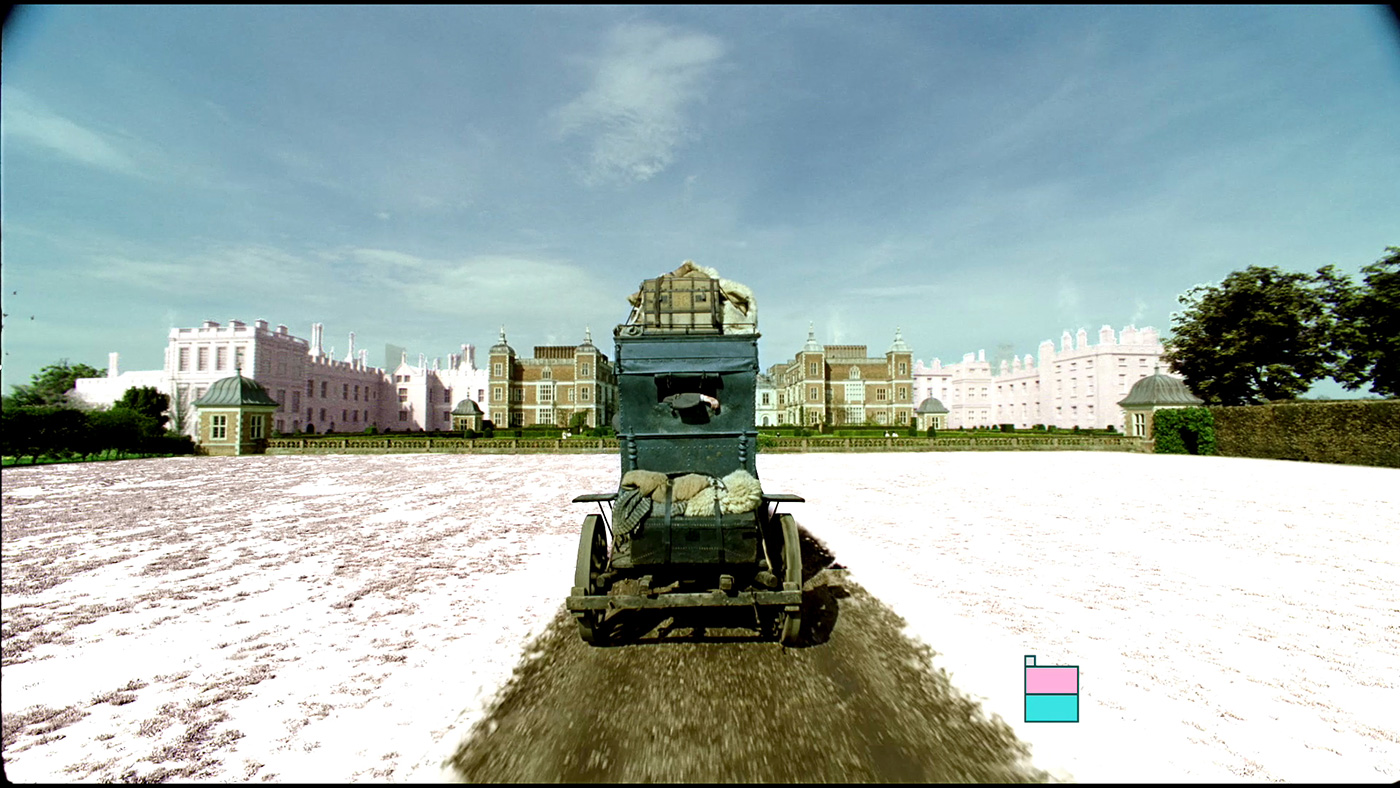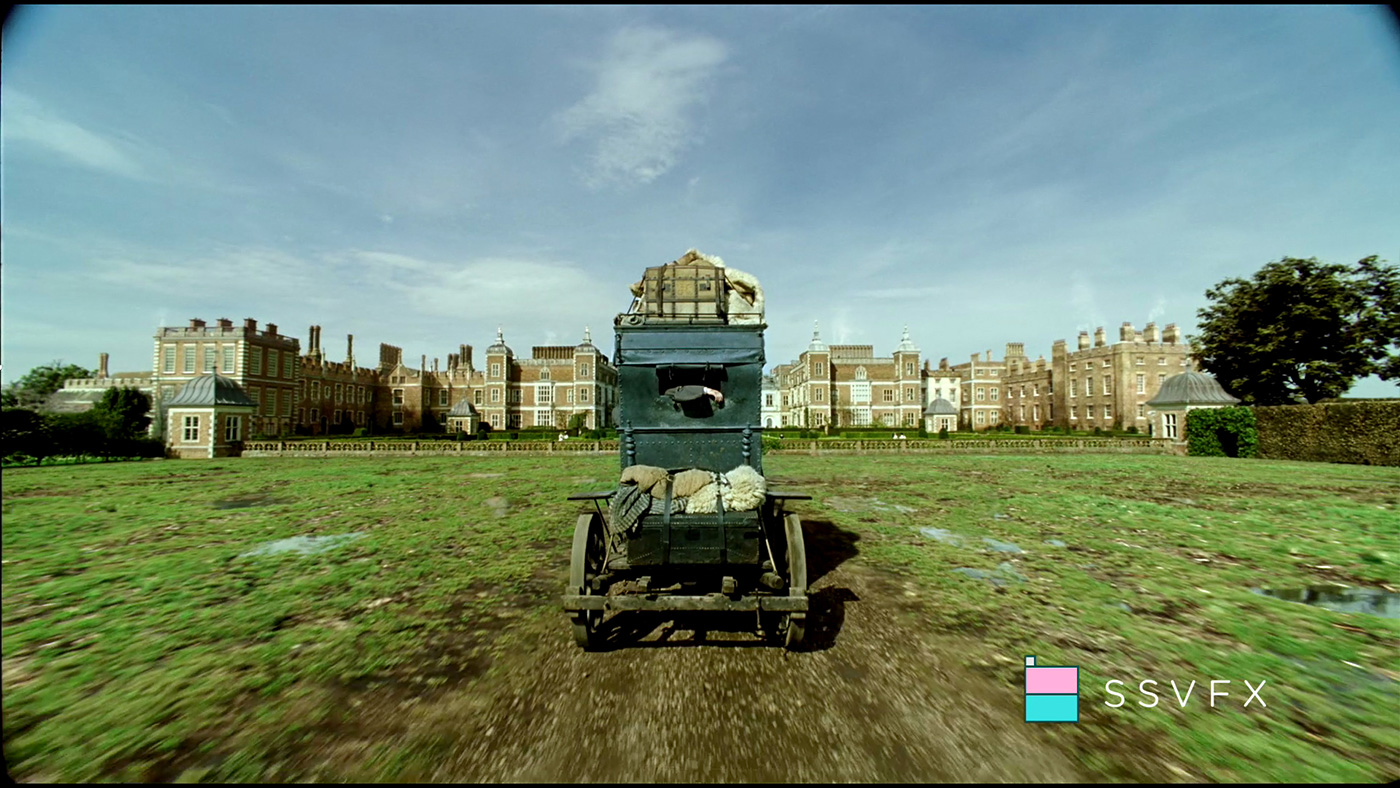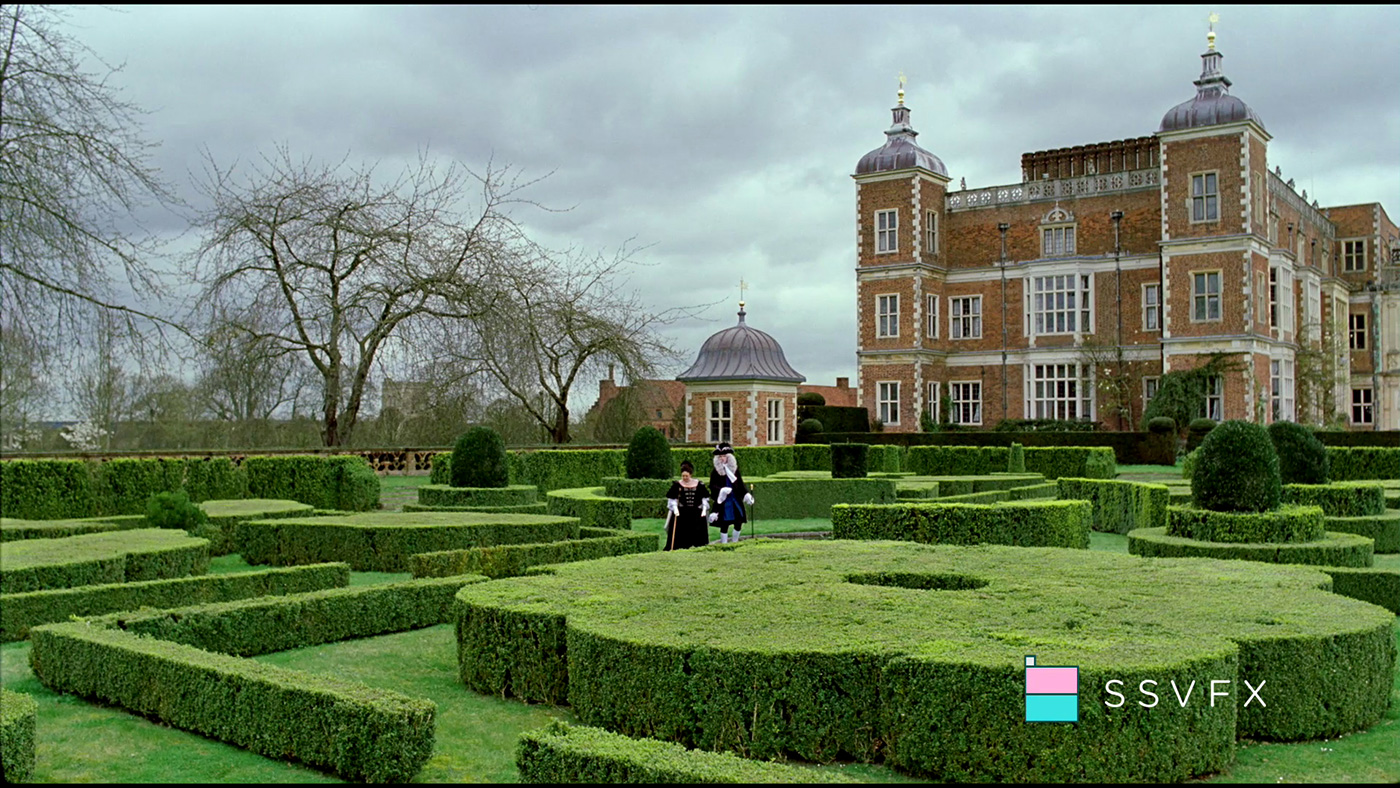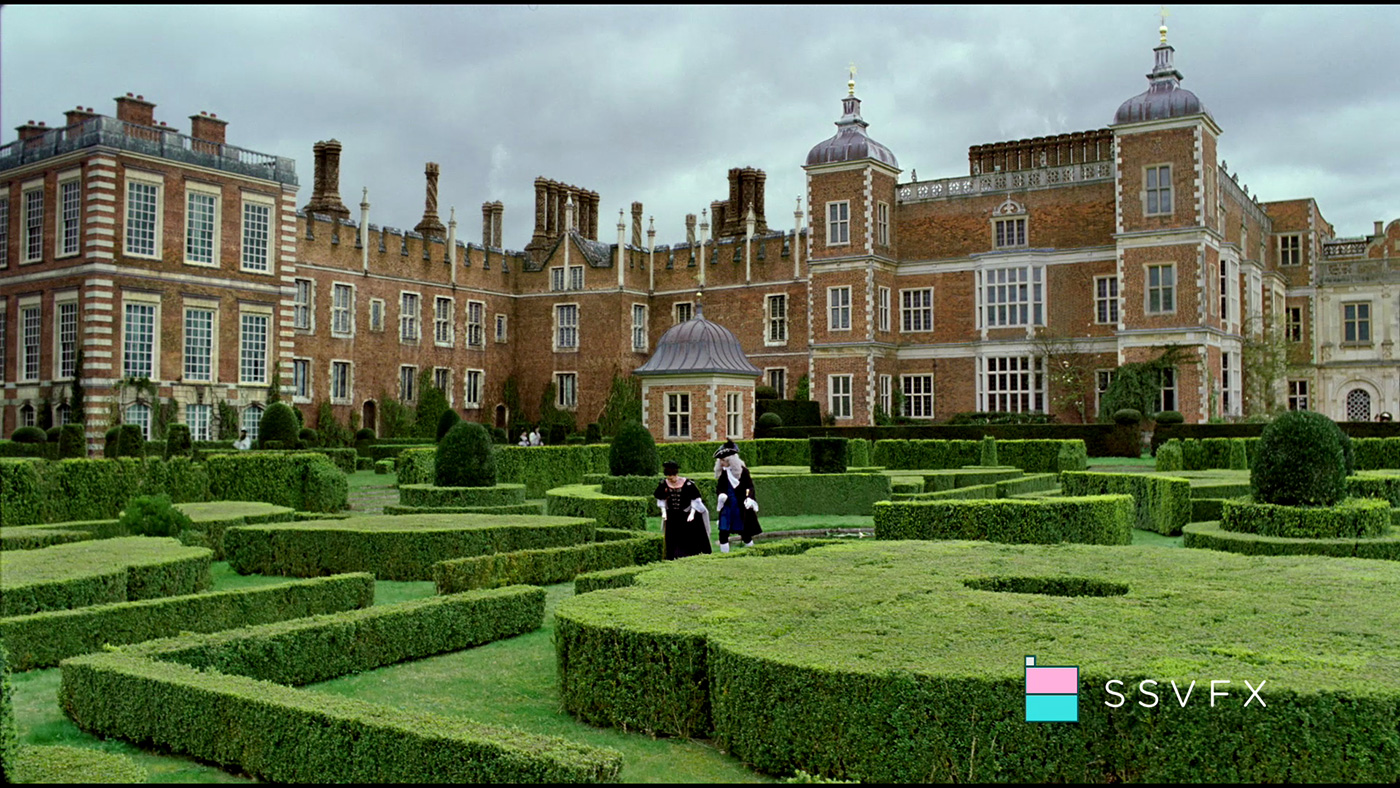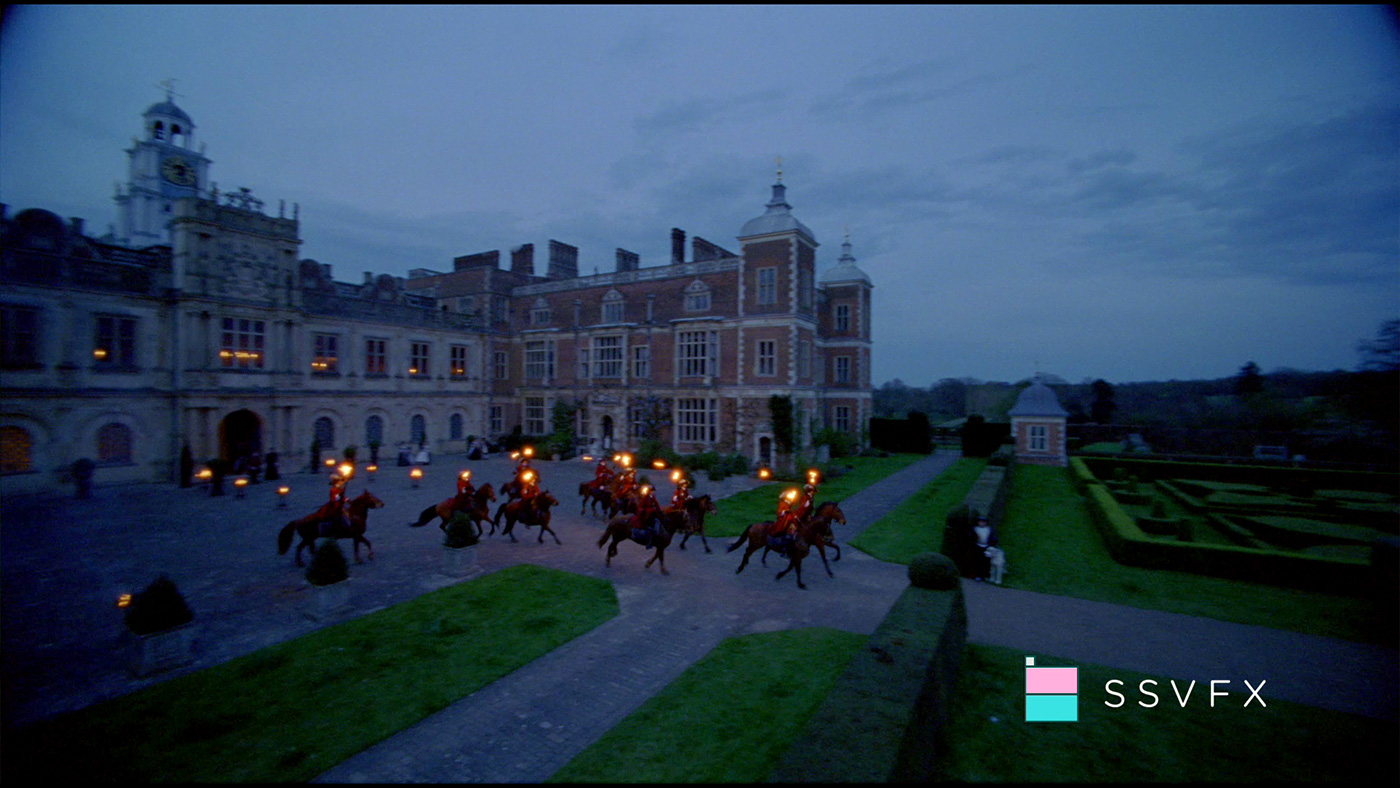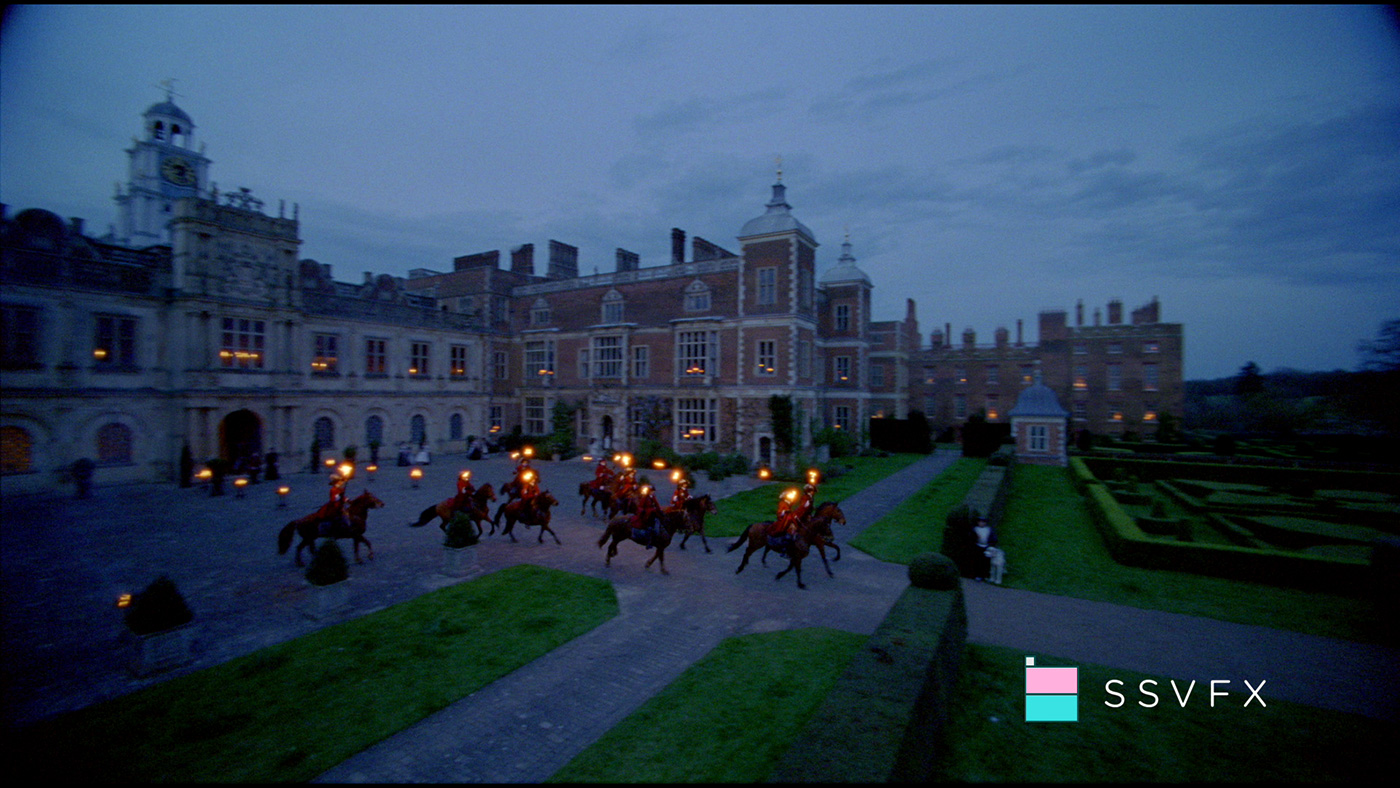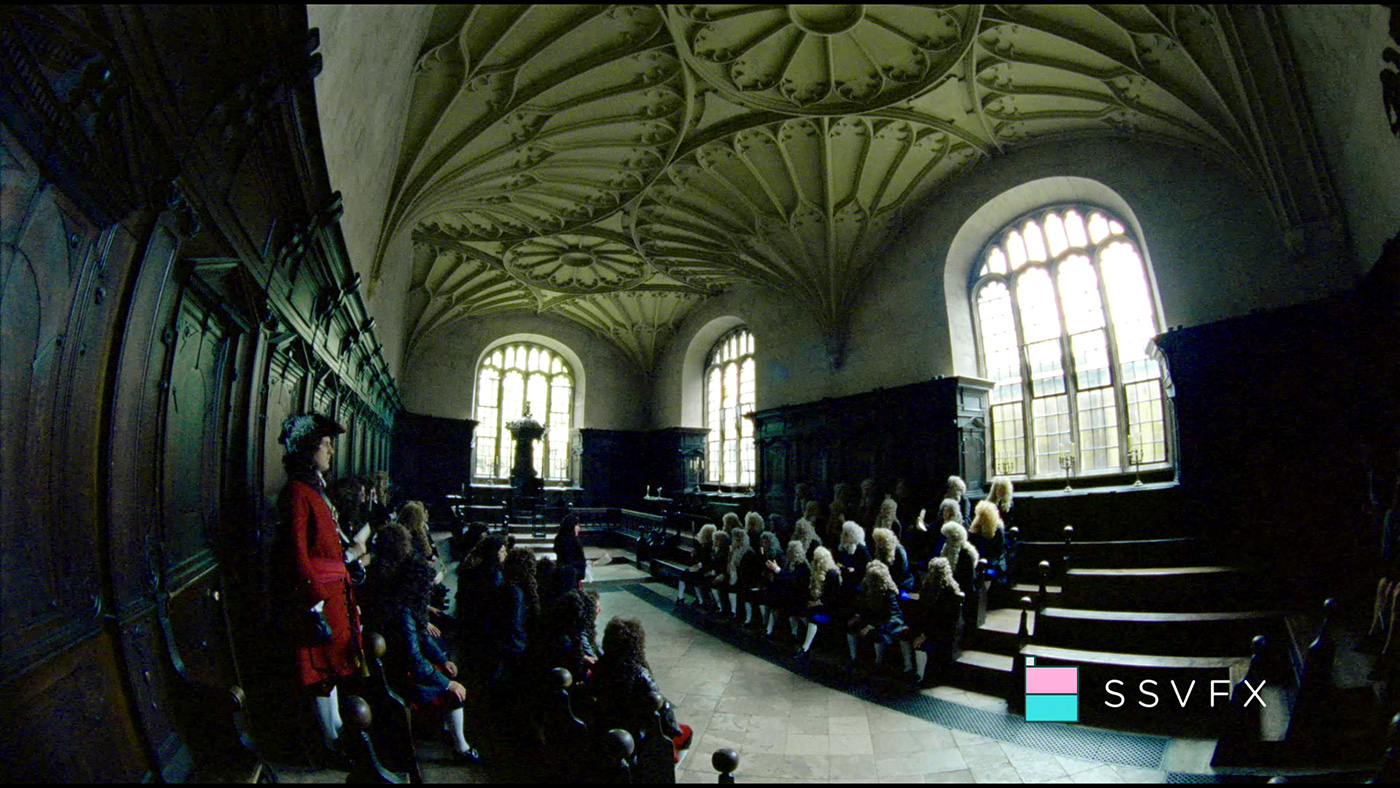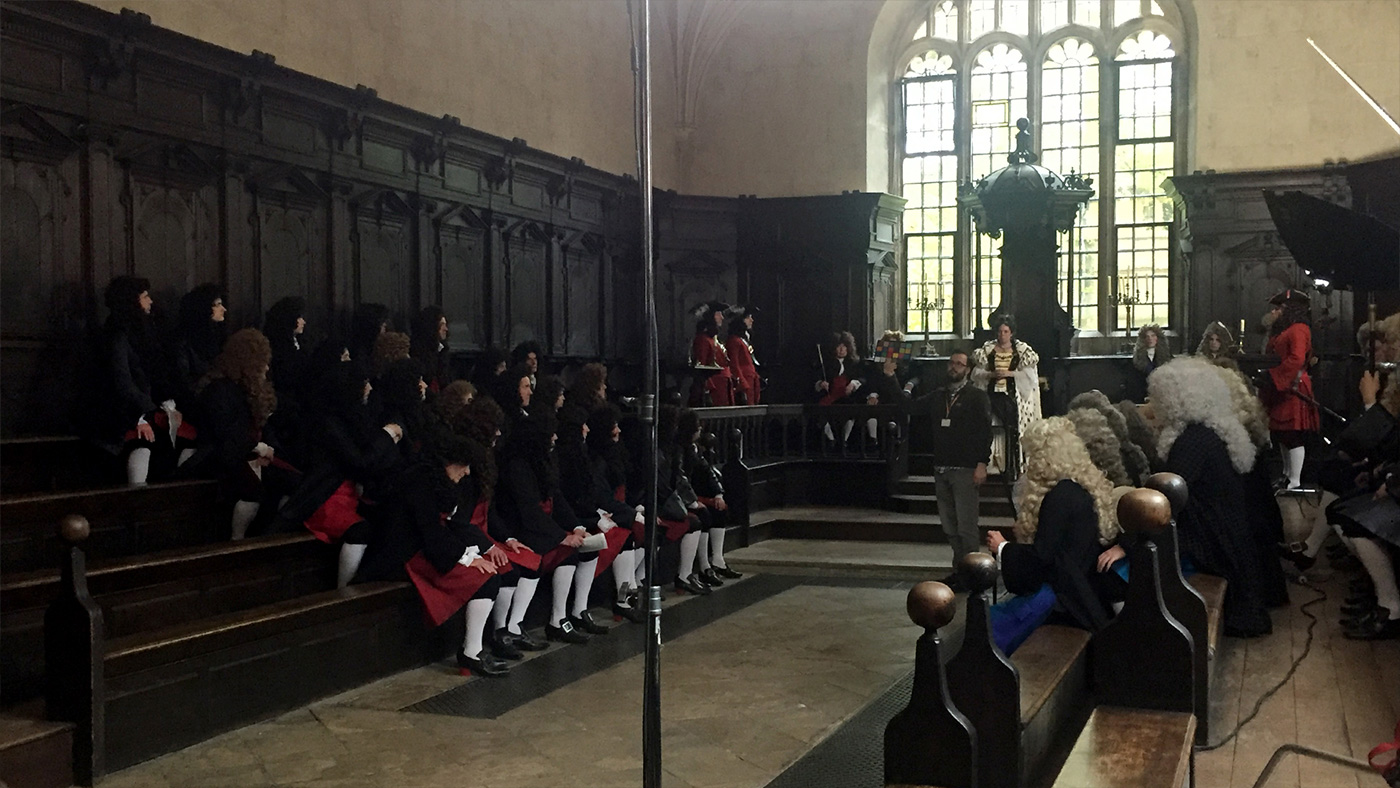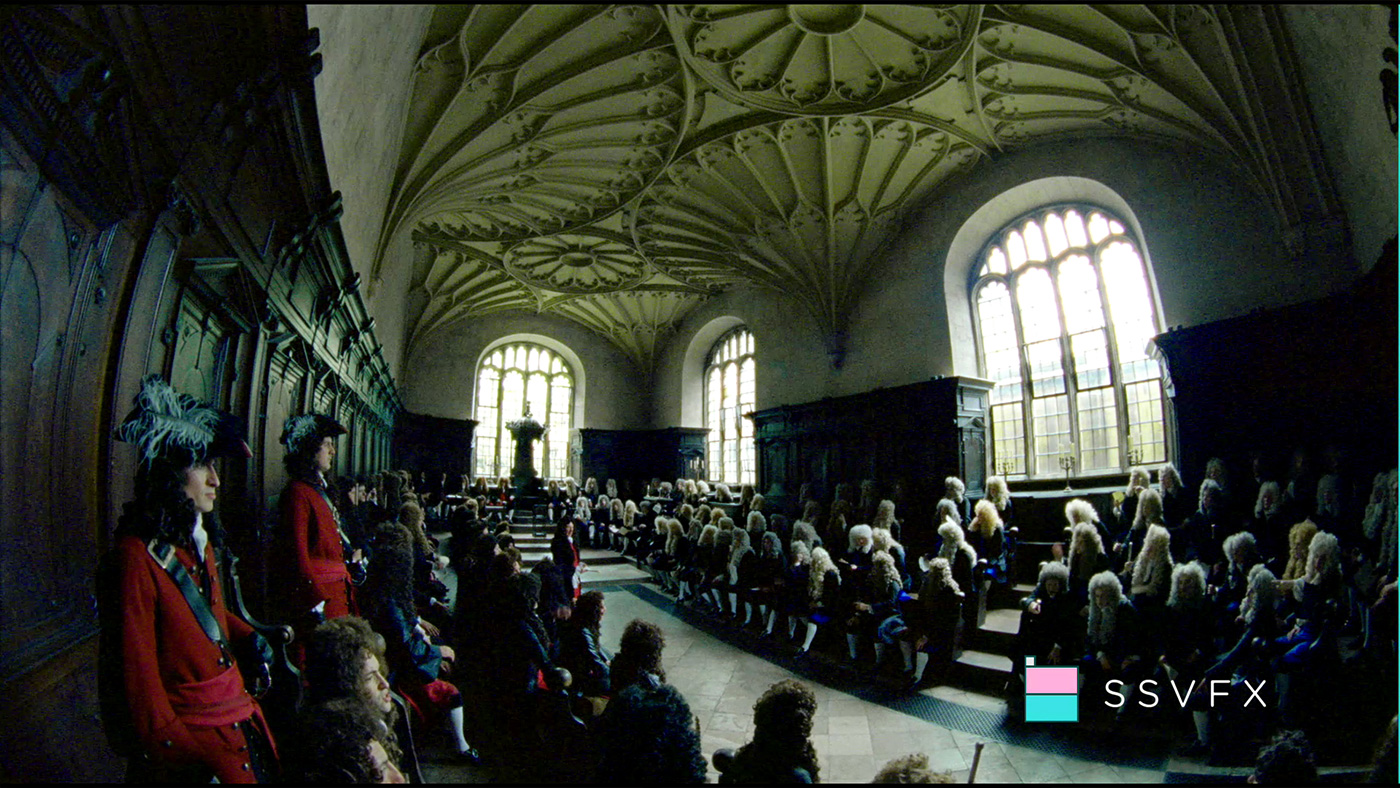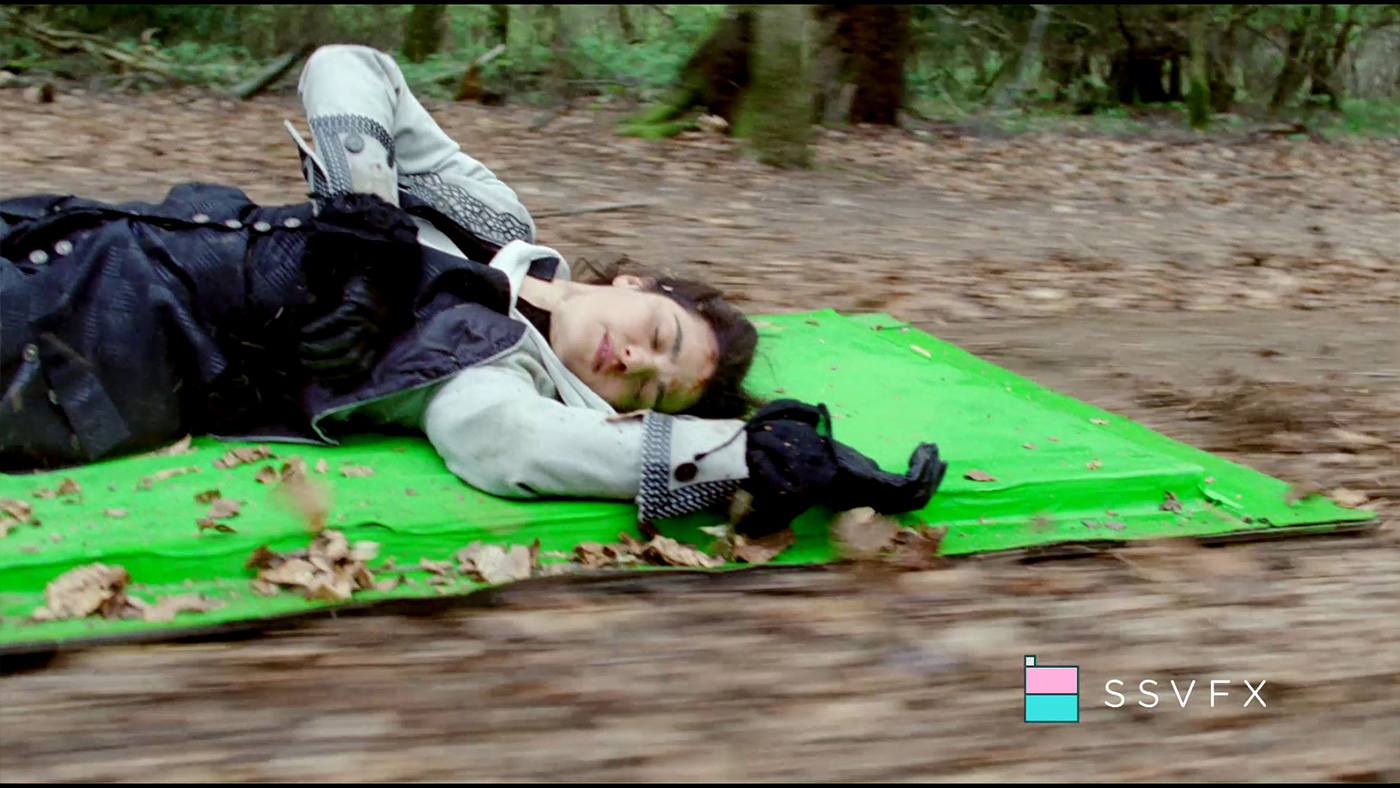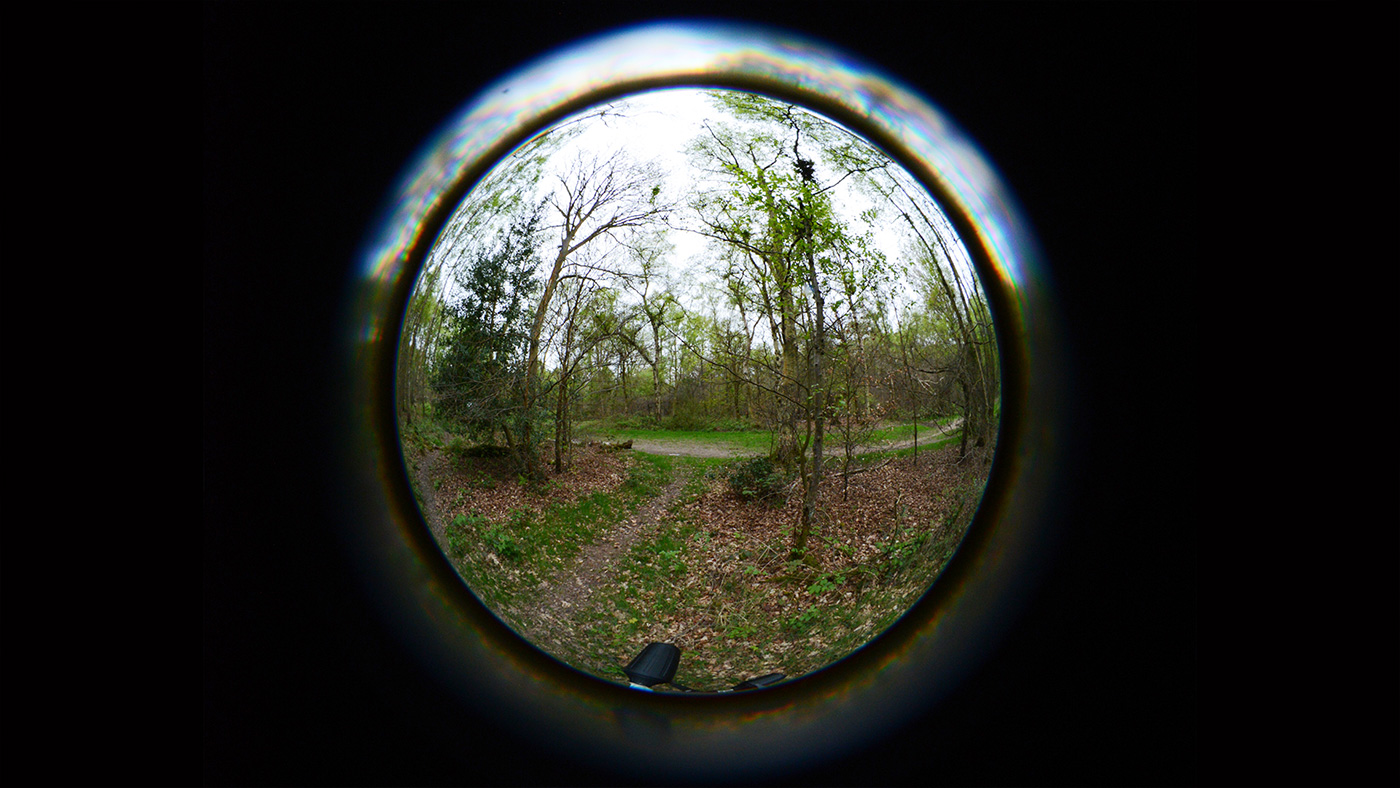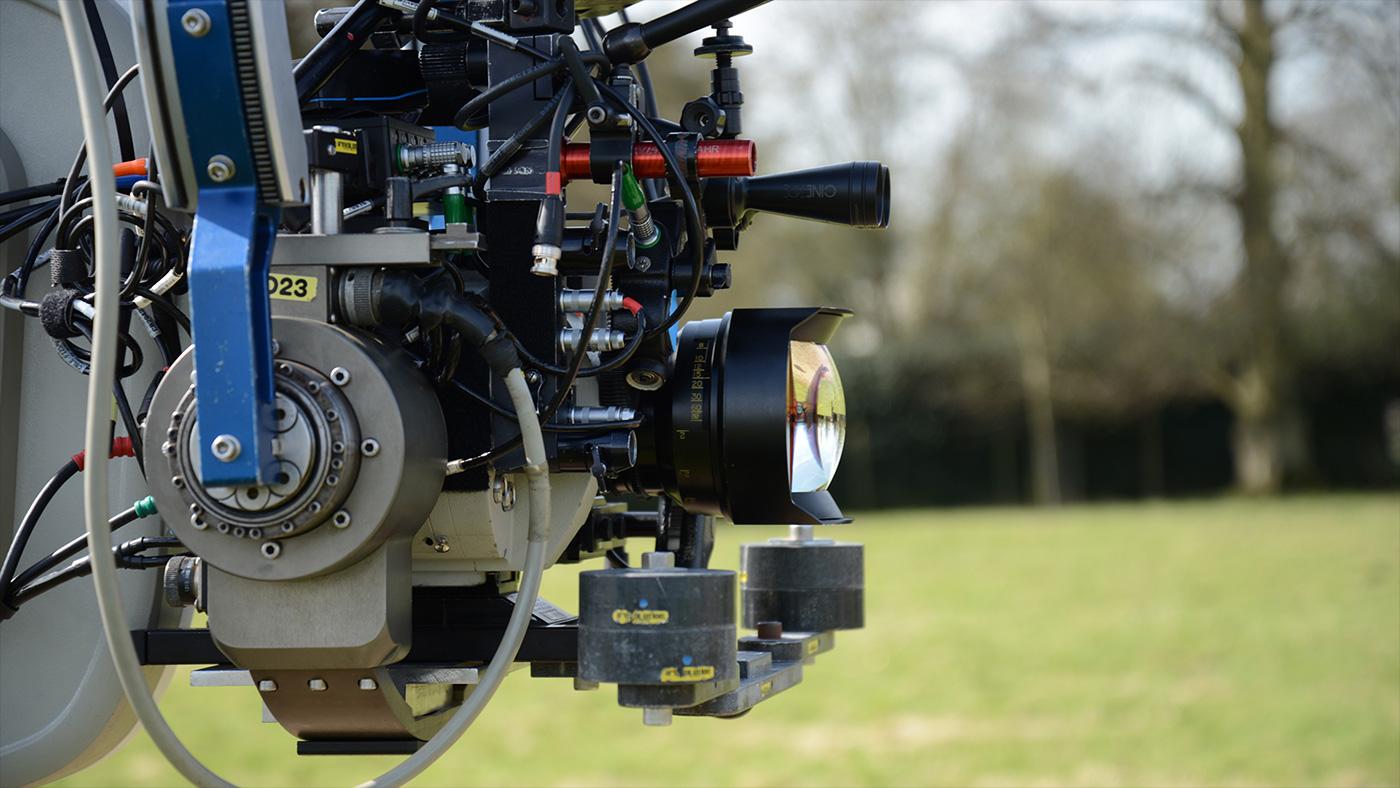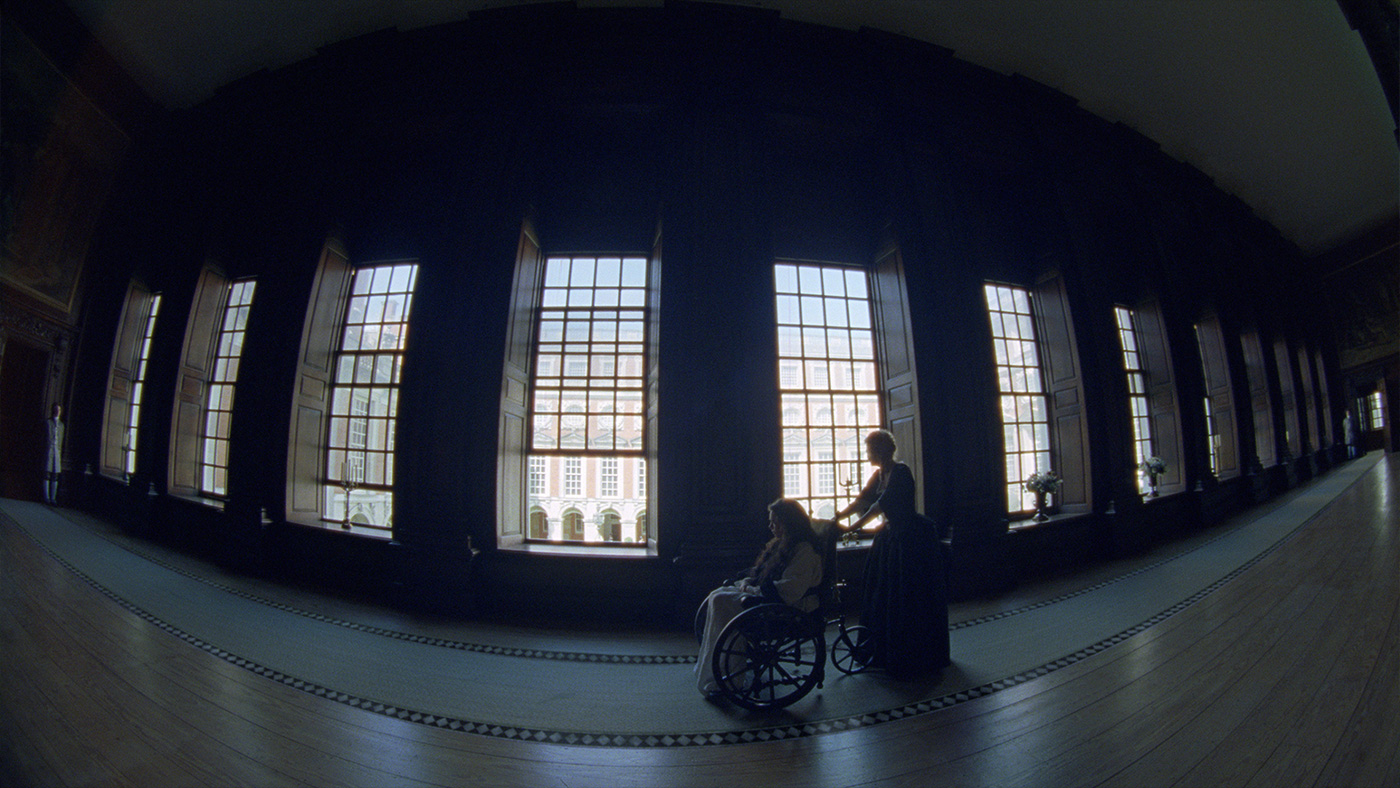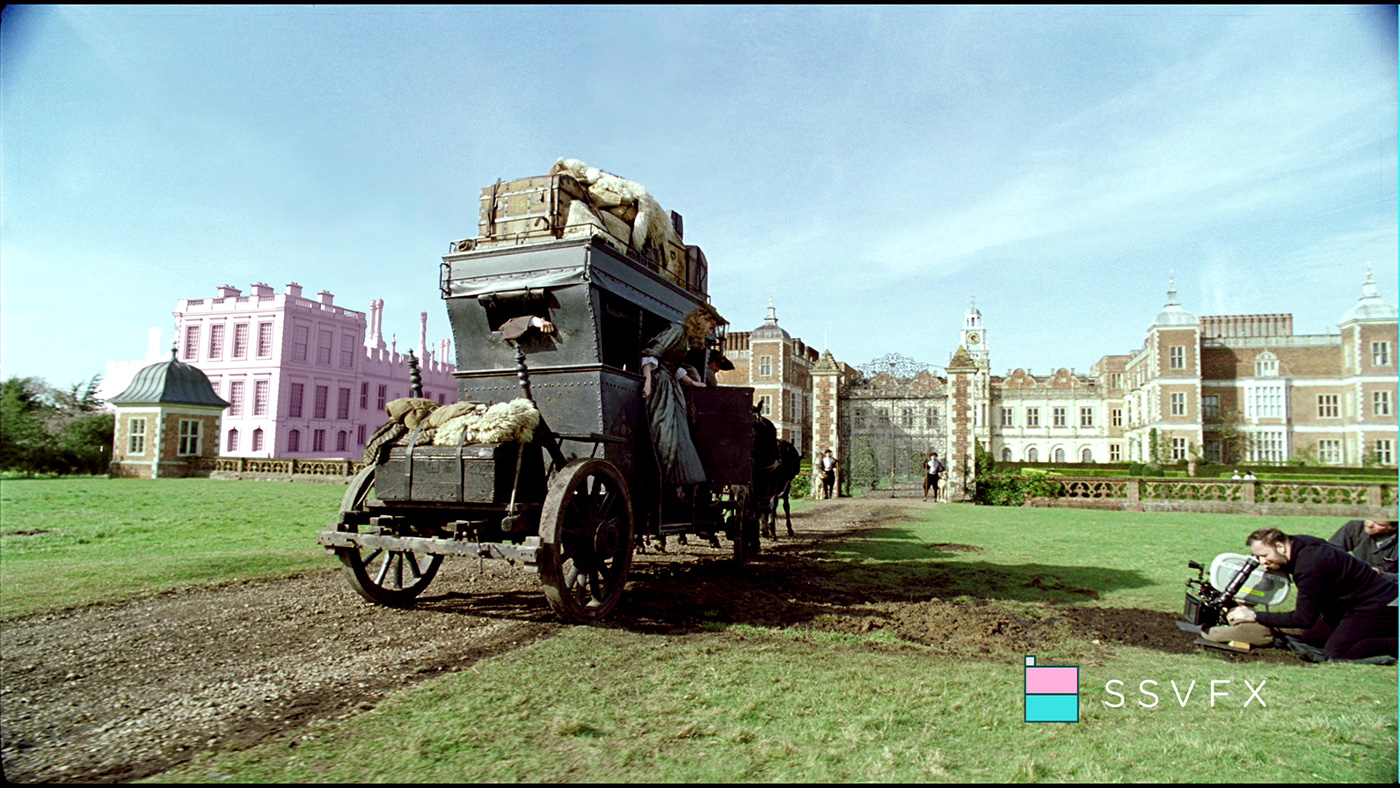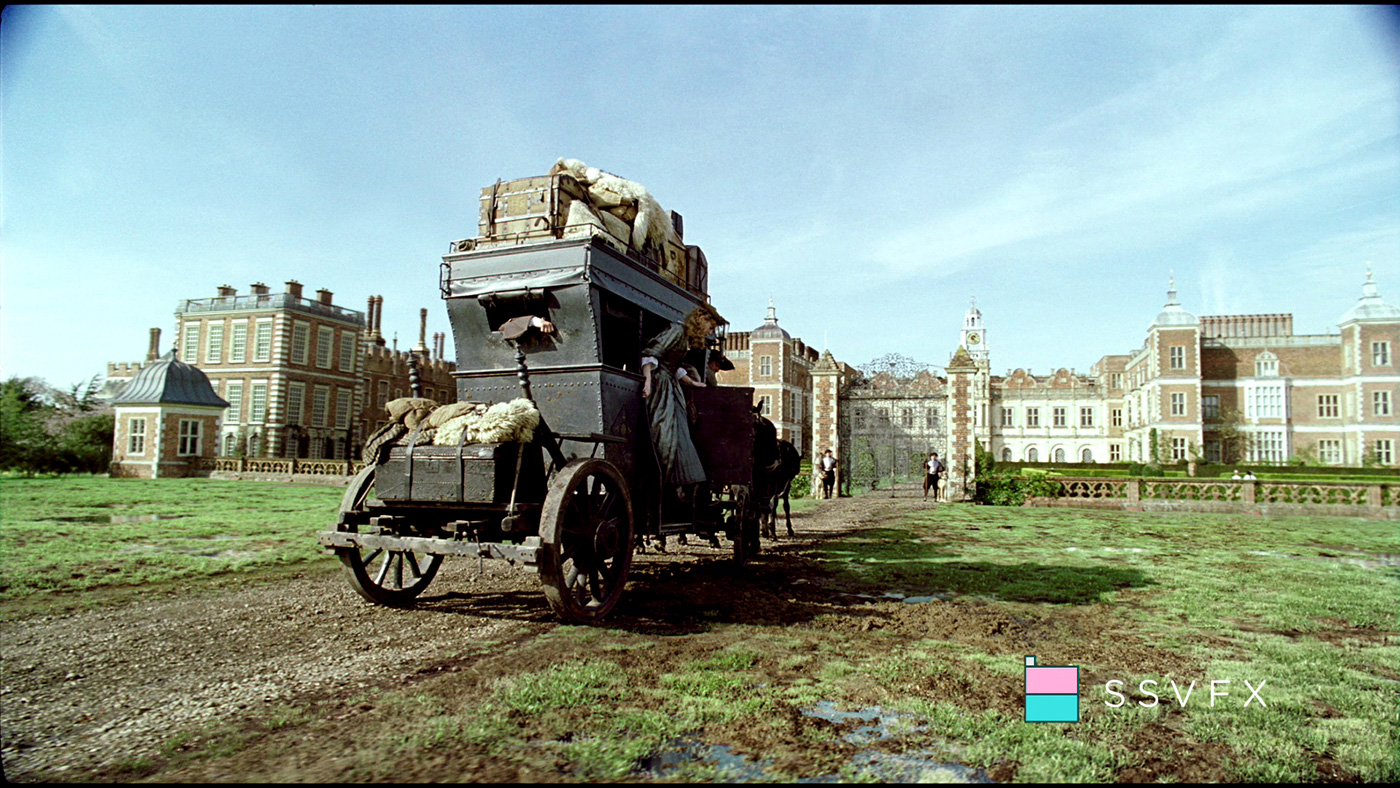In 2011, Ed Bruce explained the work of SSVFX on the first season of GAME OF THRONES. He then worked on many movies and TV series such as THE FRANKENSTEIN CHRONICLES, INDEPENDENCE DAY: RESURGENCE, BLACK SAILS and LOST IN SPACE.
How did you and SSVFX get involved on this show?
I had previously worked with the director Yorgos on his film THE KILLING OF A SACRED DEER and have also worked on multiple films with Element Pictures, the Irish Production team behind THE FAVOURITE. We got involved at script stage for budgeting & planning and because I was to be the Visual Effects Supervisor to cover the on-set shoot.
How was the collaboration with director Yorgos Lanthimos?
Yorgos has a strong vision. He knows what he wants. He’s also very articulate and has a great technical language that only helps around the complexities of Visual Effects. THE FAVOURITE wasn’t a film that pushed the boundaries of Visual Effects, but it was a film that strongly relied on truly invisible effects work. We’ve worked on many period productions and have the understanding of how to navigate a modern world when crafting a defined time in architecture and environments. Yorgos work is extremely unique. If you’ve watched his back catalogue, you’ll know that. I very much enjoyed working with him on his previous film and was genuinely excited to be part of his HODs on THE FAVOURITE.
What was his approach and expectations about the visual effects?
Ultimately to be invisible. Seamlessly interwoven within the rich tapestry and palette. Nothing should look out of place or draw the eye away from the performances or narrative. We had to be mindful of Yorgos stylistic choices. We were shooting on film with a variety of lenses that often create challenges within VFX and in many instances shooting with lower exposures of candle light.
How did you organize the work with your VFX Producer?
Most Visual Effects Supervisors will tell you how valuable the VFX Producer is. I’m very fortunate to have a producer I trust and have a great short hand with. We think alike and understand where to place the focus and energy. Eric has great experience of designing the teams and their schedule to really maximise the time we can spend on each specific task. We all want to spend as much time as possible crafting the best possible shot. It takes a lot of planning to run a smooth ship. We’re very organised and love good databases and tools. From Shotgun to Excel and FileMaker Pro or the bespoke in-house tools, the tracking and planning of each individual task from its conception to its delivery requires great diligence and organisation.
Can you tell us more about your work during the shooting?
Most creative decisions relating to the VFX had been designed and planned pre-shoot. Therefore, most of the shoot was more about execution whilst collecting the plethora of data needed. One of our main shooting locations was Hatfield House in Hertfordshire. It’s an amazing piece of architecture built in the early 1600’s. It was a wonderful opportunity to photograph in detail the buildings and the surroundings gardens. We knew that any time we were on set, at any location, there was additional benefit to collect as much photography to build a library to help in the creation of digital extensions when the specifics had yet to be concluded.
Can you explain in detail about the set extension of the Manor?
Hatfield House is a beautiful manor house. However, the director wanted a building with a grander sense of scale, so the decision was made to extend and widen the property and its gardens. We knew the building would play a central part in the film. The grandeur and opulence of a Queens palace. We also knew it would be seen in various scenes from different angles and set at multiple times of day. For the most part, a textured 3D model was required with varying subtleties painted on top. In other instances, 2.5D or 2D worked.
What kind of references and indications did you received for the Manor?
We had a wonderful Production Designer in Fiona Crombie. She has a fantastic eye for the period and very much understood the feel for the environment. She provided rough concepts and reference images of the types of buildings and how they join. Unlike some building set extensions where you match and add in the same style & textures, we were extending with different wings built with different materials. Scale & materials were key to the convincing success of the work. From Fiona’s concepts we were able to go through our library of buildings and textures to start building up a 2D blocking of the Palace. From there we built a 3D asset and began texturing, lighting for each scene and set-up.
How did you create the various textures?
On-set we collected a large quantity of texture photography which combined with our extensive library (years of working on period dramas) gave our environment & matte painting team all they needed to match the desired 2D blocking concept.
The Manor is seen is various lighting conditions. How does that affect your work?
The CG Palace Asset was lit and then, depending on the shot, matte painted into the scene. The lighting conditions only became more challenging at night, mainly for match move and comp to understand where the extension started and ended. In some of the shots, the light from the candles in the windows or braziers on the ground was the only thing highlighting the extension area.
How did you populate the Parliament sequences?
This was the traditional in camera 2D crowd duplication approach. Time and shuffle whilst ensuring we didn’t double up on placement. We had a great team of AD’s to assist us. We also had to be careful each side of the room was correctly filled with the appropriate political party’s costumes and wigs. Then it’s pretty much an extensive rotoscoping task to overlay all the tiles of crowd sitting, standing, clapping etc.
Can you tell us more about your work on the sequence in which Rachel Weisz is dragged behind her horse?
This was a fun sequence. A great mix and balance between the Stunts, Horse & VFX team. Obviously with any stunt, safety is paramount. We might be using a professional stunt person, but still safety is key.
We had a series of shots in the sequence which had different approaches in execution. The fall from the horse and wide dragging was a stunt performer. The close-up dragging shot was a mix of stunt performer and Rachel using face replacement. To execute the dragging shots the stunt performer was wire rigged to the horse with a release mechanism. Safety required a horse rider to ensure the horse didn’t bolt off into the woods. We then were required to digitally remove the rider, remove any signs of the hidden crash mat which was dug into the terrain and covered in mud and leaves. We also re-adjusted the body orientation so that the head & shoulders looked like they were being dragged on the ground.
For the close up shot we undertook a traditional 2D face replacement. We shot the stunt performer being dragged on the terrain interacting through mud and leaves. We then also shot Rachel performing on a padded plate also being dragged, but without the discomfort of interaction, but through the lighting environment of the wooded canopy.
The stunts team, horse team, camera dept & of course Rachel really were fantastic in helping us collect the right type of material to support the VFX team in its execution. It’s such a dramatic sequence.
The Director of Photography use lenses with huge deformation. How did you manage this challenge?
It was fun! We knew from the outset that we’d have the challenge of working with some pretty wide and interesting lenses. Traditionally a wide shot maybe a 21mm or 17mm lens. However, Robbie Ryan, the cinematographer had a 6mm, 10mm, 14.5mm at his disposal. These lenses played a huge role in the look and feel of the film and gave us such interesting viewpoints showcasing the wonderful sets and locations tapestry of texture and colour. Robbie and Yorgos crafted such an interesting and unique look and feel through these lens choices.
Obviously, we had the technical challenge of undistorting the footage before we added the VFX component. Each lens also had lovely unique glass deformations near the edges that brought the additional workflow around softening & chromatic aberration. The camera dept was fantastic in helping us collect camera data and shooting each lens grid. Its quite tricky to shoot a 6mm lens grid.
Some shots became more difficult than others depending on the camera movement & lighting, especially interior night or candlelight. Particularly panning shots on the 6mm and 10mm lens. Undistorting left us with very large working areas/comp resolutions to ensure no data loss when restoring the lens distortion. We enjoyed the challenge. The payoff is great. Invisible VFX work within an interestingly crafted shot.
Are there any other invisible effects you want to reveal to us?
With any period drama there are plenty of production fixes. Some are simple. Remove an alarm box or paint out a distant car. Some become more challenging than others. I think most movie goers are oblivious to the extent a VFX team supports the practical teams to ensure all modern day or unachievable in-camera work is complete. Outside of planned VFX work, the department is a useful directors/AD’s/Producers etc tool to ensure a smooth shoot doesn’t become bogged down with trying to resolve every in-camera problem, when there is often a more efficient route via VFX. Of course, all productions and VFX teams must be mindful of how quickly this type of work adds up. Communication is the key. From the first location recce to seeing a challenge on-set, making sure production is aware of what can be done and what impact that may have can really help support the film making process.
Which sequence or shot was the most challenging to create?
We had some humdingers. Compositing into extremely long shots that have moving cameras using wide lenses in low light can be fun. We were also utilised to support with facial scarring and wounds, something we have a lot of experience in. Previously on THE KILLING OF A SACRED DEER, Yorgos previous film, we were tasked with adding bleeding eyes on a child actor. We were very successful which then gives the director the knowledge and tools for future projects.
I’d say the most challenging shot wasn’t a big establisher or replacing the entire ground with wet mud & puddles but a ‘simple’ production fix. Shooting within listed buildings or heritage sites you’re often restricted to what you can do, particularly in removing things practically. Within one beautiful long hall there was a carpet that production was unable to remove. Our challenge was to augment the carpet run by adding a black and white ceramic tile trim to its edge. All very simple stuff, however, one shot was captured with the 6mm lens in low light with a long panning camera move. Solving the lens undistort pushed us into incredible high resolution which in turn pushed the capabilities of the compositing software and the computers ram. We created the tiles within 3D but that also had its challenge scale wise. In the end it was a mix between 3D & DMP. 30k resolution comp scripts aren’t that fun!
Is there something specific that gives you some really short nights?
Not really. Most films or shows have their challenges. We have a fantastic team of artists that really helped tackle any creative problems in fun and interesting ways. You’ve got to enjoy what you do even when faced with difficult tasks. Long nights and hard work are part and parcel to deliver great work. If you ask a few of the team though, they would most definitely say Rabbits!
What is your favourite shot or sequence?
The film is full of wonderful and interesting sequences. Its such an original piece Yorgos has created. In terms of the visual effects, I very much enjoy the opening sequence set extension work. We replaced so much of the screen space. New CG muddy puddle ridden ground, extended CG Palace & CG trees and it all goes completely unnoticed. It’s the best complement our team can get.
What is your best memory on this show?
Being on-set being able to witness such amazing performances from the cast was hugely exciting. It’s no surprise to anyone who worked on THE FAVOURITE why they’re getting such applause. It was echoed across each department and crew member. It really felt like we all knew what an interesting and wonderfully original film Yorgos was creating. There’s a lot of heart, soul and passion put into THE FAVOURITE.
How long have you worked on this show?
Personally about 1 year & 9 months.
What’s the VFX shots count?
About 150 shots.
What was the size of your team?
The VFX crew was just over 40.
What is your next project?
Well we’ve just completed VFX work on CAPTAIN MARVEL which hits the cinema March 8th. We’re also still in production on the final season of GAME OF THRONES which airs in April. It was 2010 when I first started on GOT, can’t believe its coming to an end!
We’ve other exciting projects in house, which I can’t talk about yet. All very exciting.
A big thanks for your time.
THE FAVOURITE – VFX BREAKDOWN – SSVFX
WANT TO KNOW MORE?
SSVFX: Official website of SSVFX.
© Vincent Frei – The Art of VFX – 2019


